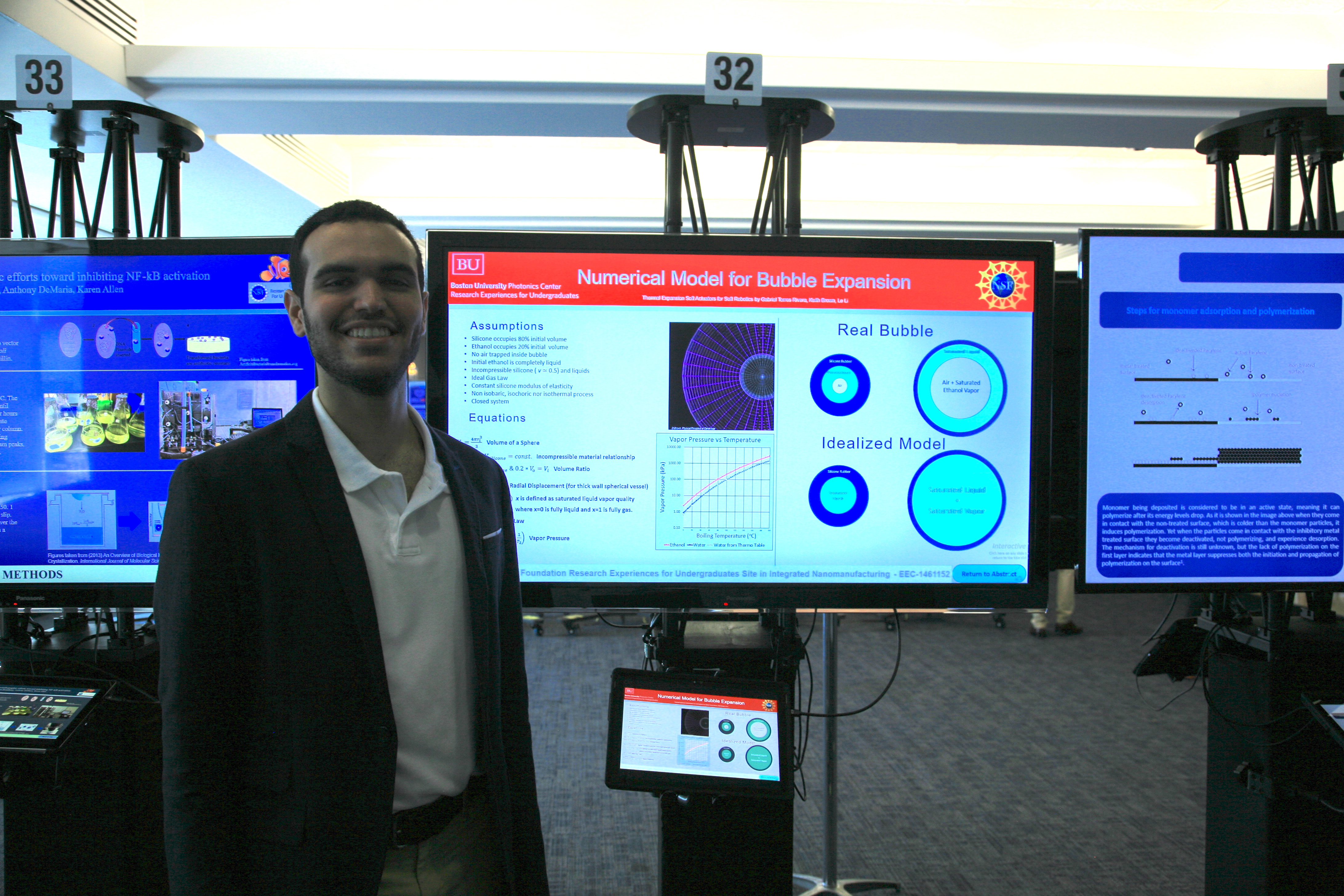Keith Brown
Mathematical Model for Liquid-Vapor Thermal Expansion Soft Actuators
ABSTRACT
Soft robotics is an emerging field with many applications in industry, medicine, and security. A need for soft, lightweight, and biocompatible actuators for soft robots has led to the common use of pneumatic actuators, followed by less common light activated actuators, and high voltage electroactive polymers. However, last year a thermal expansion-based soft actuator was demonstrated as a high strain (reported up to 900%), high stress (up to 1.3MPa), and low density system that requires minimal external equipment and cheap to manufacture [1]. Our team proposes a mathematical model to predict thermal expansion in the form of a saturated liquid-gas mixture enclosed in a thick-walled spherical vessel. In order to test this model, we performed a series of experiments on ethanol-based soft actuators. The mathematical model, although idealized and without any free parameters, matched the experimental values within 20% and highlighted the importance of liquid-vapor transition as the main cause of actuation, in contrast with prior reports that suggested a boiling transition was responsible for actuation. In addition to providing a new framework for designing phase-transition based actuators, we explored the role of elastomer modulus and nanoparticulate additives as methods to improve the performance and lifetime of actuators. These results will shed new light on the quantitative design of soft actuators.
CONCLUSION
The actuator sphere was heated to 99oC and expanded 9.5 times its original volume. Overall error differences ranged between 20-30%. This includes actuation reported by other researchers [1]. A cusps is predicted for when the saturated vapor-liquid quality is 1, meaning if all the ethanol evaporates, expansion would be solely because of heated gas expansion. Thermodynamic analysis suggests that major actuation is caused by saturated liquid-vapor phase change and not by heated gas expansion. Future work can be focused on including variable parameters such as modulus of elasticity and initial air inside bubble. Further testing is needed to completely very the model at higher temperatures and for different modulus of elasticity.

UNDERGRADUATE STUDENT
Gabriel Torres Rivera

GRADUATE STUDENT
Le Li